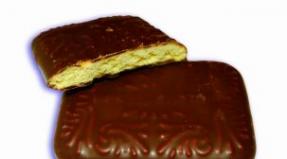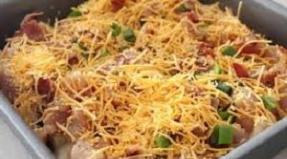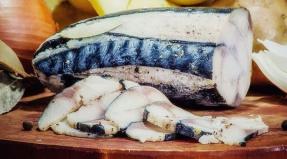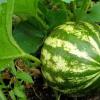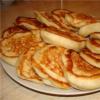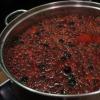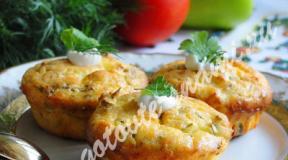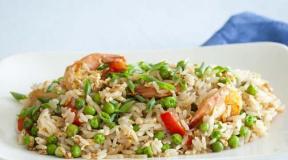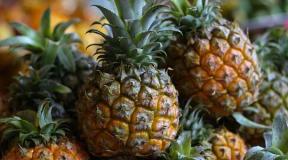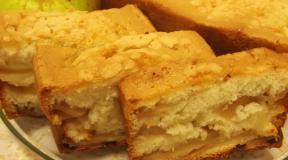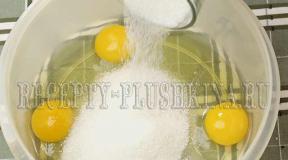Champagne which is better to choose reviews. Choosing champagne: an overview of the best brands
Some Russian producers also produce sparkling wines worthy of any holiday.
What is good quality champagne and how to choose it
Before heading to the store for a bottle (or box) of a festive drink of all times and peoples, it's a good idea to understand its “origin”.
Good old classics
The classic manufacturing method (as is done in Champagne) is a laborious and time-consuming process. Such wine is naturally saturated with carbon dioxide (festive bubbles), during secondary fermentation and long aging directly in bottles - this requires at least 15 months.
The technology is known all over the world, but today only those few companies whose production facilities are located near vineyards use it. The fact that the drink is made according to the classical French method can be judged by the inscription on the label "Metodo Classico" or in Russian - "Aged", "Classic".
Tank production
About a hundred years ago, a method was invented that made it possible to speed up the fermentation processes dozens of times and, accordingly, reduce the cost of the product. The technology was called "reservoir" due to the fact that the wine is saturated with gas bubbles in huge metal containers (tanks), and not in bottles. If the intoxicated drink is made using this method, no markings are made on the labels.
Most of the sparkling wine, which in our country is called "champagne" - is the result of such "accelerated" fermentation. The "classics", of course, have a richer bouquet and more shades of taste. But more often than not, these differences are found only by experts. Whether it makes sense to overpay for something that you cannot appreciate is up to you.
Beware of counterfeiting
It is much worse if the manufacturer is trying to sell you an ordinary, sometimes not very good quality wine, artificially saturated with carbon dioxide bubbles (like lemonade).
An indicator that this is a surrogate product will be its low price and adjectives on the counter-label: “sparkling”, “effervescent”, “carbonated” or “saturated”. Set aside such a bottle without a doubt.
How to choose quality champagne in the store
We stopped in front of the rows of bottles on the shelves of the store - pay attention to the following signs of the “correct” sparkling wine:
- Price tag. A good wine, even made using a reservoir method, cannot be cheap. At the same time, the products of well-known brands often do not justify the overpriced - get ready that you will pay for prestige, and not for a special bouquet and taste.
- Bottle. For sparkling wine, use a 0.75 ml dark thick glass container that can withstand a pressure of at least 6 atmospheres. It is very rare to find it in bottles of 1.5 liters and large - their production requires special skill of glass blowers. Containers with a volume of 0.2 ml are used mainly by airlines and hotels, 0.375 ml - by restaurants.
- Cork. Russian producers protect their wine with natural materials, not plastic. A cork made from balsa wood is difficult to see under the protective foil, but it can be felt - it is softer to the touch.
- Label and counter-label. Look for such signs on them: category, expiration date, grape variety used in production, manufacturer's legal address and location of production facilities. Pay attention to the composition - there can be no flavors and dyes in a quality product! Carelessly glued labels, indistinct and smeared inscriptions should also alert.
If you want to protect yourself from buying low-quality champagne, go to buy it not in the nearest small shop, but in a wine boutique, in extreme cases - in a hypermarket. Do not buy bottles from a display case where they have been under the light for a long time - most likely, the drink has lost its quality.
Test purchase - video
How to determine the quality of champagne at home
The coveted bottle was bought and uncorked, now you can determine the correct choice by the appearance of the drink, smell and taste:
- Colour. In authentic champagne, it is white, with a shade of light straw, sometimes the drink in the glass glows with golden-greenish reflections. Sparkling wine can also be pink or red. The color of the drink in the glass must match that indicated on the label.
- Bubbles. Small ones, of the same size, play in a glass for at least 10 hours. They hissed and disappeared after 10 minutes - in front of you is a surrogate.
- Transparency. The drink should be free of impurities and sediment.
- Aroma. A subtle and exceptionally natural scent with fruity and citrus notes.
The presence of a yeast or alcoholic aftertaste indicates that the manufacturer does not pay enough attention to adherence to technology.
How to choose champagne for the New Year
Looking at sparkling wine for the festive table, decide on its variety. It all depends on the content (or absence) of sugar liqueur in the drink. Look for labels for the following:
- Doux - with a high (more than 50 g / l) sugar content, is quite rare.
- Demi-sek, sec and extra sec - semi-dry (semi-sweet), dry and extra-dry, respectively, the amount of sugar varies from 50 to 20 g / l.
- Brut and extra brut - with a very low (less than 15 g / l) sugar content and no sugar liqueur added.
It is generally accepted that winemakers use sweet liquor to mask material flaws or production flaws. For this reason, brut wines with their absolutely "pure" taste and aroma are absolutely popular all over the world. It is best to open a feast with such champagne, it is ideal with seafood, white meat, hard cheese.
Another thing is that in our country they traditionally give preference to semi-sweet or even sweet varieties, and brut is considered too sour. In this case, semi-dry can be an ideal compromise, which will be appropriate both for traditional Olivier and for sandwiches with black caviar. However, there is a "company" for semi-sweet champagne on the New Year's table - it can be served with fruit and cake at the end of the feast.
Russian champagne is tasty and inexpensive - myth or reality
In order to give yourself and your loved ones a gastronomic pleasure, it is not at all necessary to decorate the table on New Year's with the elite Dom Pérignon or Moët & Chandon. And it is really possible to find worthy samples from domestic manufacturers at a very "our" price:
- "Tsimlyansk wines". The factory, located in the Rostov region, produces excellent sparkling wines. The most famous of them is red, according to a unique Cossack recipe - ideal for any celebration. Well, premium white Onegin is ideal for the New Year's feast.
- "New World". The plant, founded more than one hundred and twenty years ago by Prince Golitsyn, pleases the consumer with the unchanged quality of its "sparkling products". The brands "Collectible", "Novy Svet", "Paradisio" are ideal for the festive table.
- Abrau-Dyurso. The most famous champagne in Russia from a company from the Krasnodar Territory. In its assortment you can find sparkling wine made using reservoir technology ("Russian Champagne", "ABRAU") and excellent "classics" ("Imperial", "Millesim"). One thing is upsetting - Abrau-Dyurso makes a big mark-up on a well-known name.
Now it will be easier for you to understand the large assortment of wine boutiques in the "intoxicated" departments of hypermarkets - you know for sure which champagne is good in quality, taste and aroma, how to choose it, and which domestic producers you can safely give preference to.
No holiday is complete without champagne. Light wine creates a mood and sets you up for fun. In order for the celebration to go according to plan and not be spoiled by low-quality alcohol, you should choose good champagne. Everyone's tastes are different: someone trusts the time-tested “Sovetsky”, but for someone the famous “Veuve Clicquot” or “Don Perignon” fall into this category. But you should not be limited only to these varieties.
Classification of sparkling wines
Champagne is the correct name for drinks produced in the French province of Champagne, from which the wine got its name. At the same time, many varieties of it are produced in other countries using a similar technology.
Italian winemakers are famous for varieties of good champagne, and French ones from other regions. Russia is not lagging behind European manufacturers. Delicious wine is made in Moldova. Also produced in Germany, Portugal, China, Spain.
It is not necessary that the price for a bottle of sparkling wine "bites". Among the variety offered by manufacturers, there is also inexpensive good champagne. The choice is not worth the cost, although this is a weighty criterion, but based on your own preferences. Not to get confused and to understand which wine is better, will allow minimal knowledge about the producers, what happens in color, sugar content and other characteristics.
By country and region of origin
If we talk about the rating of the best champagne according to the location of the manufacturer, then wine from Champagne should be at the top. This will be the most expensive dish on your festive table. But there is confidence in the quality of champagne, because its production is controlled at the state level.
There are also champagne houses in other regions of France. On the labels of bottles with sparkling wine, the inscription "Cremant" flaunts and the name of the region is added, for example, Bordeaux, Alsace, Burgundy, etc. They are inferior to the best French champagne in sparkling, but the quality remains high, as it is also controlled at the state level.
Italian sparkling wines should be selected with the "DOC S" marking - this guarantees the high quality of alcohol. The drink gets its name from the region of production and / or grape variety. Prosecco, Asti, Fragolino and others - these are all champagne from the Apennine Peninsula.
There are also quite a few manufacturers in Russia. The quality cannot be compared with the French, but if we take the ratio with the price, they are quite good varieties. Lev Golitsyn, Pinot Noir, Moskovskoe, Imperial and some others can be safely called sparkling wine, not a wine drink.
By used grape varieties
Champagne is most often made from a mixture of several wines. The best single-variety sparkling wines are available. If we talk about elite champagne wines, then there may even be material from seven varieties of grapes. To determine how many varieties were used in production, the inscriptions on the bottles will help:
- blanc de blanc - white from whites, or sparkling wine from white Chardonnay grapes;
- blanc de noir - white from black, or in the composition of good champagne there are two black (red) varieties Pinot Mignet and Pinot Noir;
- cuvee - cuvee, or the use in the production of several varieties of grapes (Italian Lambrusco, for example, just like that).
No one will give the exact answer, which is better - single-grade or assemblage champagne - to choose. You should be guided by your own taste.
By color
Sparkling wine is:
- white. Most common. Despite the name, it can be produced from red grapes. Lightness is achieved due to the fact that during production, the pulp and skin of the berries, when squeezed, contact each other for a minimum amount of time;
- red - champagne made from berries that do not diverge in color with the tint of the finished drink;
- pink. It is obtained in two ways: by adding red wine or by increasing the contact time of the skin and pulp.

The classification is as follows:
- sweet (indicator:> 65g / l, the label contains doux (fr) or dolce (it));
- semi-sweet (50-65, demi-doux, semi-dolci);
- semi-dry (35-50, demi-sec, semisecco);
- dry (20-35, sec, secco);
- brut (6-15, brut);
- extra brut (no more than 6 g / l, extra brut / brut nature / brut zero).
Since it is believed that sugar negatively affects the aroma and taste of sparkling wine, when choosing which champagne is better to take: brut or semi-sweet, the world will give preference to the first option. The drink is distinguished by sourness and astringency, so not everyone will like it.
Semi-dry and semisweet champagne are placed next to each other in the classification, so which one is better to buy depends on your own preferences. The taste will not vary as much as with brut.

By quality level
Out of competition in this classification - products from the best houses of French champagne. The famous "Veuve Clicquot", "Dom Pérignon", "Moet" - alcohol of the highest quality, which will empty your wallet a tidy sum.
Elite champagne made from the best grape variety is classified as prestigious or special. If only one year's harvest is used, such a sparkling wine is called vintage or melisimous. Considering that successful years for winemaking happen 2-3 times in 10 years, the year will certainly be indicated on the bottle.
Good, but unremarkable among other types, champagne without a year with a price of up to 2,000 rubles per bottle is the most common category of sparkling wines.
Important! Not always the cork, the shape of the bottle, the bubbles are indicators of quality sparkling wine. At a price of up to 200 rubles, it will be a carbonated wine drink of the economy segment.

The best brands of champagne
The leaders among the producers of sparkling wines are France, Italy, Russia, Spain, Moldova. You can also single out products from the New World in a separate category - made in Chile, Argentina, Australia, South Africa. And in each of these countries there are brands that fall under the designation "the best champagne" of domestic production.
Any French brands are good, so the choice between Moet and Widow Clicquot will be made based on the cost and availability at the outlet. To say which of these is the best champagne is just to tell your opinion. The quality of both drinks is impeccable, it is not for nothing that they are included in the TOP-5 brands of champagne in the world. Other houses are also worthy of attention: Krug, Ayala, etc. Do not forget wines from France under the general name "Cremant", which will also delight you with taste and aroma.
Leaders from Italy - Asti Mondoro, Asti Martini, Lambrusco Grasparossa di Castelvetro, Cavicchioli Lambrusco Bianco and others. When buying wine with such sonorous names in our open spaces, you need to be careful. Good Italian-made champagne will hardly cost up to 1000 rubles, so there is a chance to run into a fake or wine drink.
Russian brands that represent wine with good taste: "Abrau-Dyurso" and "The heritage of the master" Lev Golitsyn ". Individual varieties deserve to be compared, which champagne is better. And "Lev Golitsyn" is superior to the carbonated wine drink Bosca.
At the same time, we pay tribute to the producers of the latter, who position their product in this way, without pretending to have a more sonorous name. Bosco is comparable in taste to Santo Stefano champagne, also presented by Russian producers. Which wine is best? Under each brand, varieties are produced from sweet to brut. Both brands are inexpensive drinks, which explains their popularity. At the same time, Bosca will be tastier and better, which is more expensive, but which one to buy, you still need to choose based on your own preferences.
In Moldova, the best sparkling wine is Cricova, in Spain on the label you need to look for Cava, which denotes sparkling wine.

There are just a couple of days left before the New Year, so many of our compatriots are actively involved in resolving the issue of purchasing food for the festive table. At the same time, not the last place is given to the choice of a sparkling drink, which will make the holiday truly memorable and fun. And, in order to facilitate this task as much as possible, the specialists compiled , having familiarized yourself with which you can easily purchase a quality drink at an affordable price. The relevance of the issue of choice lies in the fact that the modern market is simply replete with offers, significantly increasing the consumer's chances of purchasing surrogates.
Champagne is called synonymous with fun, joy and victories, so it can always be seen as a decoration for a romantic meeting and other other festive event. And if it is best Russian champagne, rating which occupies high horizons among similar products, the holiday can definitely be called a success. At the same time, it is important to understand that the best sparkling wines are produced in regions that grow special varieties of grapes. If we talk about Russian manufacturers, then best Russian champagne rating 2017 indicates that these are products from ZAO Abrau-Dyurso (Krasnodar Territory), the main brands of which are Victor Dravigny, Udelnoe Office and Imperial.
Russian champagne rating 2017
According to the assurances of experts, JSC "Abrau-Dyurso" is the largest domestic producer of sparkling wines, which makes its specialists zealously monitor the quality of the drinks supplied to the market. It is for this reason that its products lead , especially since the company's pricing policy allows us to talk about the availability of low-alcohol drinks for most segments of the population. In general distributed as follows:
In this context, the correspondents of our news agency emphasize the fact that this rating of Russian champagne producers was compiled not on the quality and taste characteristics of drinks, but on their popularity and demand among the population. Well, since people tend to buy products only from trusted manufacturers and at affordable prices, the rating compiled by experts can be considered as the main criterion for choosing champagne, including for the purpose of decorating a New Year's table with it.

Some of the nuances of purchasing drinks
Despite the fact that the specialists made rating of Russian-made champagne, allowing you to make an accented choice, it is important to understand that you need to buy it only in specialized stores or in large supermarkets. As a rule, employees of retail chains of this level very scrupulously check the supplied goods for quality and terms of implementation, and their pricing policy is based on a more flexible schedule. And of course, their marketers track positions such as rating of sparkling wines of Russian producers aiming to purchase only popular drinks. This means that here you can always buy a bottle of high-quality sparkling wine and celebrate the New Year fully armed.
Special attention should be paid to the cost of the drinks offered. So, if we are talking about products that are ranking of Russian-made champagne 2017 occupies the highest positions, then its price cannot start with an amount below 300 rubles. Of course, if we talk about world producers, then their drinks can reach the cost of 5,000 per bottle, but not everyone can afford these products. Well, for the average Russian, a bottle of sparkling wine at a price in the range of 300-500 rubles is quite acceptable. By the way, for comparison, you can consider Russian champagne rating 2016, which practically does not differ from the current situation on the low-alcohol products market. For our part, it remains only to add that the question, how to choose the right champagne for the new year, in fact, does not present any difficulty. You just need to follow your priorities and take into account the information regarding the manufacturer's rating.
Subscribe to our accounts at, In contact with , Facebook, Classmates , Youtube, Instagram, Twitter... Stay up to date with the latest news!
Before we tell you how to choose real champagne, we need to find out what is meant by the word "real".
We used to call all drinks that have bubbles as champagne. But this is far from the case, and everything that is produced outside of France is just sparkling wine. And some of them are a miserable parody of a noble drink.
Everything you need to know about real champagne
- Champagne is produced only in the French province of Champagne and its four sub-regions: Montagne de Reims, Vallée de la Marne, Côte des Blancs and Côte des Bar.
- French champagne is always expensive.
Champagne by the amount of sugar content is
- Brut Nature / Zéro Dosage (brut nature / zero dosage).
- Brut (brut).
- Extra-Sec (extra dry).
- Sec (dry).
- Demi-sec (semi-sweet).
- Doux (sweet), which is almost never found and is very rare.
- In the province of Champagne, only 7 grape varieties are grown and the most popular of them are: Chardonnay (Chardonnay), Pinot Noir (Pinot noir), Pinot Meunier (Pinot meunier).
- Real champagne is produced using a unique patented technology - "Méthode Champenoise" - this is when champagne, that is, filling the product with carbon dioxide, occurs naturally, by secondary fermentation in a bottle and subsequent aging in a horizontal position for at least 9 months.
Now let's move on to the most important thing, how to buy real champagne and not fall for a fake. We have collected recommendations from the best sommeliers to help you choose a noble drink.
- First of all, pay attention to the price, real champagne cannot be cheap. The minimum price can start from 1500–2000 rubles.
- Try to buy champagne from small specialty shops or large supermarkets with a good reputation.
- Be sure to look at the manufacturer's country on the label. Champagne is only France, the Champagne province and its four regions (we talked about them at the beginning of the article).
- The inscription “Méthode Champenoise” must be present on the label. If you did not find this inscription, then this only indicates that you have sparkling wine in your hands, not champagne.
- Also, pay attention to the presence of an excise stamp, an exception may be drinks purchased in the duty free zone.
- Shake the bottle, if a uniform foam appears that fills the entire empty space of the bottle, then this is a good sign. The main thing is not to overdo it with shaking.
- Cork is also an important element. It should be made only from natural materials so that the champagne can "breathe". The material of the cork can even be identified through the foil with a simple push. Natural material will be softer than synthetic material.
- The bottle should be made of thick and dark glass. If the glass is thin, then it can simply break, and thanks to the dark glass, champagne does not deteriorate when exposed to sunlight.
- Another important factor is bubbles. After filling the glass, the same bubbles should be of the same size and rise upward. In a quality drink, bubbles can come out of the glass for hours.
- Be careful when choosing Demi-sec (semi-sweet) and Doux (sweet) champagne, as well-known Champagne houses produce only 7-10% of this type of drink and you can run into a fake. Since with the help of a sweetener, many technological errors can be hidden (only applies to counterfeit products).
- Use the Vivino app. It is enough to take a photo of the bottle, and you will immediately receive comments and an overall rating based on the rating from people who have already tried this drink. You can download from
The article was updated and supplemented at the end of 2015.
This article in the New Year's Eve series focuses on choosing an inexpensive sparkling wine. The word "champagne" in this case is not entirely correct, although I indicated it in the title of the article. The fact is that only sparkling wine made according to a strictly defined technology in the French province of Champagne can be called champagne (according to international standards). Of course, many Russians continue to refer to sparkling wines as champagne. There is nothing wrong with that, but in this article I will only use the word "champagne" in quotes.
I must say right away that by inexpensive sparkling wine ("champagne") in this article I mean drinks costing up to 1000 rubles per 0.75 liter bottle. Real French champagne in Russia usually costs much more than 2,000 rubles for a bottle of the same volume. Of course, this is expensive; moreover, for most Russians, such prices look just wild. It is interesting, by the way, that in France itself, real champagne is much cheaper (2-3 times).
Of course, the amount of 500, 700 and even more than 1000 rubles per bottle is also rather big, but still, in honor of the holiday, I think you can afford really good wine. Sparkling wine is cheaper than 300 rubles per bottle - usually very, very mediocre; in some cases it is not even sparkling, but sparkling (carbonated).
Most budget options
In supermarkets you can find "champagne" - "Russian" or "Soviet" - even for 99 rubles per bottle. This is a terrible drink, to put it mildly. In most cases, such a wine (usually of the lowest quality) is artificially carbonated, while in real sparkling wine, carbon dioxide (and, accordingly, bubbles) are formed naturally as a result of the fermentation process. Cheap "champagne" can also be supplied with flavors and various additives, and its taste and aroma are rough, inexpressive. Sometimes there is even a distinct chemical aftertaste. Well, it's a complete disgusting, although many Russians are quite satisfied with this option.
For about 250-300 rubles you can buy a bottle of "champagne" Lev Golitsyn, Tsimlyanskoe. Bosca is actually not a sparkling wine, but a “sparkling wine drink”; I wrote about it in more detail. That is, it is clear that this is only a semblance of a good sparkling wine (to be specific, Bosca is made like a semblance of the Italian Asti wines, and a rather miserable semblance). Lev Golitsyn and even more so Tsimlyansk wines are of a higher level than Bosca, but with a price in the region of 200-300 rubles, there is nothing much to expect from them.
It is worth adding, however, that for a big noisy company "champagne" for 250-300 rubles is an option in most cases suitable, since hardly anyone from this company will carefully study the taste and aroma of wine. But for a more intimate (let's say) setting, it is better, of course, to buy better quality sparkling wines.
Russia: sparkling wines Abrau-Durso
In my opinion, Russian sparkling wines Abrau-Durso have a good price-quality ratio. But nothing more. The cost of one bottle is from 300 to 1000 rubles, and sometimes more (depending on the specific variety). Expensive sparkling wines Abrau-Durso (they cost from 500 rubles) taste, aroma and game are noticeably better than cheaper options. This is a very solid "champagne", but only in its price segment. Again, this applies only to expensive options - Imperial and Victor Dravigny; cheap ones have much simpler taste and aroma.
Abrau-Dyurso produces semi-sweet sparkling wines (for those with a sweet tooth), semi-dry and brut (for those who prefer dry wine). Expensive sparkling wines Abrau-Dyurso (for example, "") differ from cheap options (for example, "Abrau") in a more multifaceted bouquet because they are made according to the classical technology (with secondary fermentation in bottles), while cheap ones are made using the reservoir method. Accordingly, if possible, it is better to buy "Victor Dravigny" or "Imperial".
Sparkling wines Krim
Artyomovsk winery produces relatively good sparkling wines Krim, however, they cannot be called brilliant. The cost of one bottle is from 350 rubles. Pink, white and red sparkling wines are produced under the Krim brand; semi-sweet, semi-dry and brut (= dry). If we compare it with the expensive sparkling wines of Abrau-Dyurso, then "Krim" is clearly worse, despite the use of classical technology. And the bottom line of the same manufacturer (brand "Artyomovskoye") definitely leaves much to be desired.
Moldova: Cricova sparkling wines
I myself, frankly, haven’t tasted the Cricova champagne, but judging by the reviews, the price-quality ratio is normal. Looks like even better than Crim. And the price is low, from about 300 rubles per bottle. Well-known Russian wine blogger Denis Rudenko speaks well of Cricova wines, in particular (see, for example, this entry of his).
Italy: Lambrusco sparkling wines
Sparkling wine made from Lambrusco grapes (more precisely, from several variations of this variety) differs markedly from Abrau-Dyurso and Crim: as a rule, it is light, refreshing, very drinkable. In my opinion, however, many Lambrusco wines are primitive and boring; this is especially true for the cheap varieties. Produced by Lambrusco using Sharma's simplified ("reservoir") method.
The cost of a bottle of Lambrusco is from 300 to 1000 rubles, and sometimes more. Of course, the more expensive, the richer the taste and aroma. There are many Lambrusco manufacturers, good price-quality ratio, in particular, Lambrusco Dell'Emilia differs from Chiarli. Prices are about 400-500 rubles per bottle.
You can buy Lambrusco sparkling wines sweet, semi-sweet, semi-dry and brut; red, pink and white. I must say right away that red sparkling wine is not for everybody's taste.
Read more about Lambrusco in
Italy: Asti sparkling wines
Many representatives of the fair sex are very fond of the Italian sweet sparkling wine Asti, made from White Muscat grapes (Muscat Bianco). It costs not so little, but it has a very pleasant taste, sweet, slightly honeyed, harmonious and refreshing. Many beautiful bubbles, rich fruity-floral aroma. It is easy to drink and intoxicates imperceptibly. Like Lambrusco, it is produced by the Sharma method.
Perhaps the most famous, but it costs a lot - from 700 rubles per bottle, and in terms of quality and bouquet, it is quite ordinary. Another popular option is the one that some people like more (including me). It costs about 550 rubles per bottle (the cheapest is in Auchan). Other budget options: Santero, Tosti, Toso; but I don't recommend the last two. Very good Asti wines are produced by Canti.
I talked in detail about Asti wines in.

Italy: Prosecco sparkling wines
It is imperative to mention the very popular Italian sparkling wines Prosecco. The cost of one bottle of Prosecco (there are many manufacturers) is from 500 rubles. Prosecco are dry and semi-dry white wines, they are produced by the Sharma method (that is, "reservoir"). The taste is "light", harmonious and refreshing, with fruity and sometimes floral notes. An excellent option for those who like dry and semi-dry sparkling, but not sweet and semi-sweet. Prosecco is very popular in its homeland - in Italy.
Among the best Prosecco manufacturers, I would mention Nino Franco, Ruggeri; Valdo and Carpene Malvolti produce very worthy options. Decent Prosecco from Gancia and Casa Defra; slightly weaker (in my opinion; in terms of level, not fortress) in Zonin; Tosti is even weaker (I do not recommend it). I told you more about Prosecco.
Be careful: recently, the production of Prosecco has been mastered by the ZAO Igristye Vina enterprise from St. Petersburg. The firm appears to be bottling very cheap sparkling wine imported from Italy in large quantities.
Spain: Cava sparkling wines
Among the Spanish sparkling wines, noteworthy are Cava wines, which are produced by the classical method (secondary fermentation in bottles). They cost from 500 rubles, but generally their prices start at about 900 rubles per bottle. Generally good value for money. There are semi-dry / semi-sweet options (demi-sec) and dry (brut, brut nature / brut zero). The largest and most reliable producers of cava are Freixenet and Codorniu, but other companies (for example, Muga) also make very worthy drinks.
I talked about Cava in more detail in.
Portuguese sparkling
The Portuguese make sparkling wine according to the classical technology. One of the good examples is Santo Isidro de Pegoes Brut, which I talked about in detail. It costs about 1000 rubles per bottle.
France: Cremant sparkling wines
It so happened that French wines are more expensive not only Russian and Ukrainian, but also Spanish and Italian wines. Yes, you can buy French "champagne" for 300-400 rubles per bottle, but it will be a very mediocre drink; in my opinion, it is better to buy Abrau-Dyurso for this money.
More or less decent French sparkling wines cost from about 800 rubles per bottle and are designated by the word Cremant. All of them are made by the classical method (with secondary fermentation in bottles). There are varieties of Cremant de Bourgogne (Burgundy), Cremant d'Alsace (Alsace), Cremant de Bordeaux (Bordeaux) and others. The production of all Cremant wines is controlled and follows strict guidelines set for each region. The result is consistent quality.
Sugar content should be dealt with separately. In France, the following designations are adopted:
- Brut Nature (Natural), Brut Zero - there is no sugar in sparkling wine at all
- Extra Brut - sugar from 0 to 6 grams per liter
- Brut - sugar from 0 to 12 grams per liter
- Extra Sec - sugar from 12 to 17 grams per liter
- Sec - sugar from 17 to 32 grams per liter
- Demi-Sec - sugar from 33 to 50 grams per liter
- Doux - over 50 grams of sugar per liter.
The French drink mostly sparkling wines Brut, this is the most common variant, a real classic. For many Russians, accustomed to "Soviet semi-sweet", brut seems too sour / tart, dry, tasteless. Therefore, those with a sweet tooth can be advised the Demi-Sec option (in fact, an analogue of semi-sweet in terms of sugar content). Demi-Sec sparkling wines are produced in France (although in much smaller quantities than brut), and it is possible to find them on sale.
I spoke in more detail about one of the French cremans in.
Successful shopping and bon appetit!
P.S. Of course, I may not know about all the brands and varieties of sparkling wine; in this article I have mentioned only the most popular ones, those that I am familiar with myself. This does not mean that all other sparkling wines are rubbish; among them there may well be very good specimens.
Read also ...
- Recipes for making coffee with ice cream at home
- Strawberry panna cotta - a classic of world culinary What is panna cotta with strawberries
- Cream of curd cheese for cake - the best recipes for impregnating and decorating dessert
- Profiterole recipe and three original custard recipes Protein cream for profiteroles
